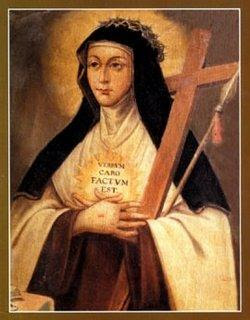
St. Helena was the mother of Constantine the Great. This made her the Queen to the Roman Empire, it was because of Helena that Constantine converted to Christianity and thus creating the Holy Roman Empire. According to St. Ambrose, Helena was an inn-keeper when Constantius lifted her from her lowly position and made her his consort. There exists a legend that she was the daughter of a British king, but there is no historical foundation for this. It is, however, true that Constantius spent some time in Britain putting down a rebellion among the Picts and Scots, and died at York, but it is thought that he had cast off Helena and taken a new wife long before this time. On the death of his father, the young Constantine brought his mother to live at court at Byzantium, the capital of the Eastern Empire. He honored her by giving her the Roman title of Augusta and also had coins struck bearing her image.
Everyone knows the story of Constantine's dramatic conversion. The Church historian, Eusebius, whose
is a chief source of information for the period, relates that on the eve of a great battle in the year 312 Constantine had a dream (by some accounts the dream was preceded by a day-time vision) of a flaming cross in the sky, and beneath it were the words, in Greek, "In this sign conquer." He thereupon embraced Christianity and proceeded south to the Tiber, where his victory over the Emperor Maxentius gave him control of the Western Empire. Constantine now effected his mother's conversion, and had his children reared as Christians. Helena became zealous for the faith, using her influence and wealth to extend Christianity. She built many churches and restored shrines; her name is particularly associated with churches at Rome and at Trier, in Gaul. But it is in the Holy Land itself that we have the most authentic record of her activities, which included the construction of great basilicas at Bethlehem and Jerusalem. To clear the Holy Places of the accumulated debris of three centuries was Helena's dearest aim. According to some of the chroniclers, when she was an old woman of nearly eighty, with the help of St. Judas Cyriacus, she cleared the mound that covered the Holy Sepulchre, and in doing so uncovered the True Cross, on which Jesus was crucified. The treasure was then removed to Byzantium, and in the life of of France we shall read something of its later history. There is, however, no record of this discovery in Eusebius.



